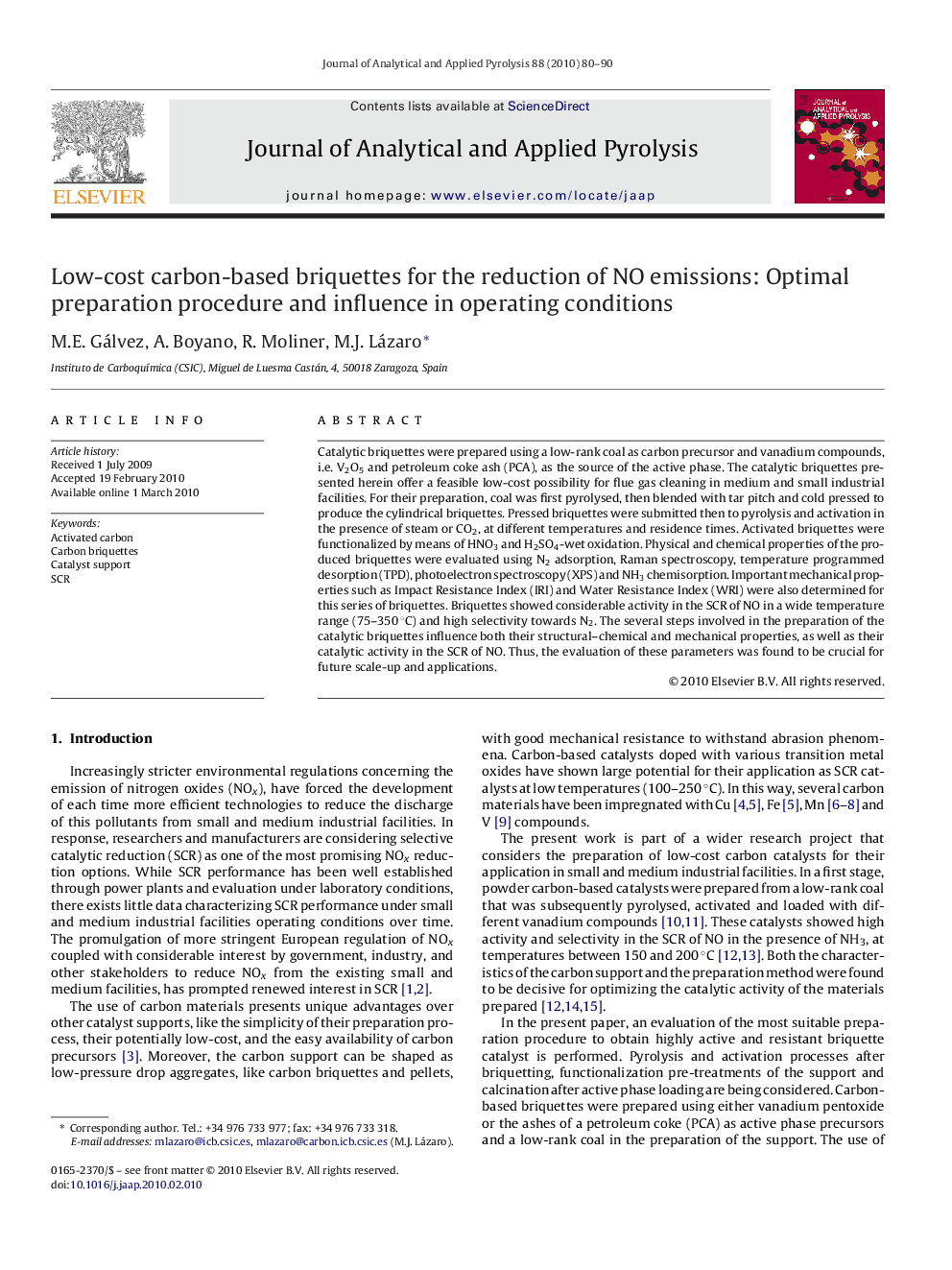| Article ID | Journal | Published Year | Pages | File Type |
|---|---|---|---|---|
| 1198530 | Journal of Analytical and Applied Pyrolysis | 2010 | 11 Pages |
Catalytic briquettes were prepared using a low-rank coal as carbon precursor and vanadium compounds, i.e. V2O5 and petroleum coke ash (PCA), as the source of the active phase. The catalytic briquettes presented herein offer a feasible low-cost possibility for flue gas cleaning in medium and small industrial facilities. For their preparation, coal was first pyrolysed, then blended with tar pitch and cold pressed to produce the cylindrical briquettes. Pressed briquettes were submitted then to pyrolysis and activation in the presence of steam or CO2, at different temperatures and residence times. Activated briquettes were functionalized by means of HNO3 and H2SO4-wet oxidation. Physical and chemical properties of the produced briquettes were evaluated using N2 adsorption, Raman spectroscopy, temperature programmed desorption (TPD), photoelectron spectroscopy (XPS) and NH3 chemisorption. Important mechanical properties such as Impact Resistance Index (IRI) and Water Resistance Index (WRI) were also determined for this series of briquettes. Briquettes showed considerable activity in the SCR of NO in a wide temperature range (75–350 °C) and high selectivity towards N2. The several steps involved in the preparation of the catalytic briquettes influence both their structural–chemical and mechanical properties, as well as their catalytic activity in the SCR of NO. Thus, the evaluation of these parameters was found to be crucial for future scale-up and applications.
